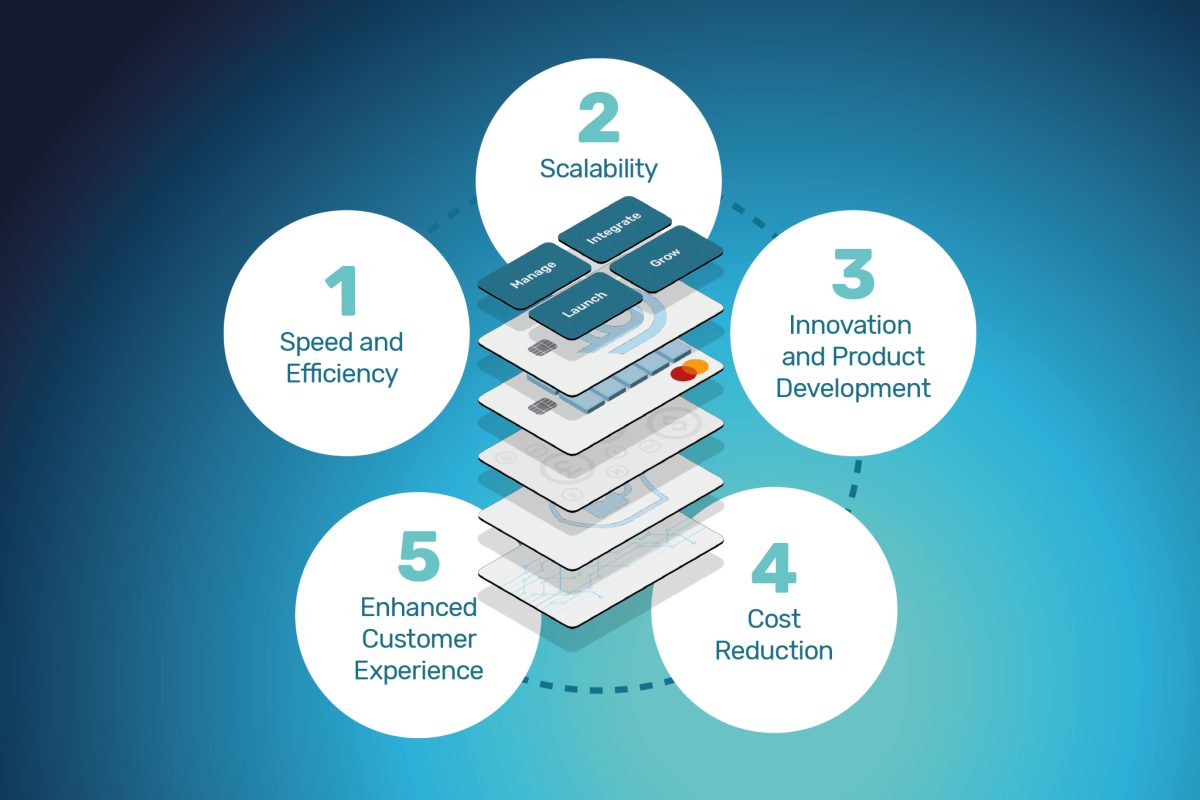We are proud to announce that our Group CCO, Brian Lawlor, is featured in The Payments Association’s insightful article, “Scoping Out Leadership.”
Check out further information here.
Expense Management. Payroll & Payouts. Employee Incentives & Perks
Still using cash and cheques? Take control of company spending with B4B prepaid cards. Stay up-to-date with the latest B4B Payments and Fintech news.

We are proud to announce that our Group CCO, Brian Lawlor, is featured in The Payments Association’s insightful article, “Scoping Out Leadership.”
Check out further information here.

We’re thrilled to be in the July edition of FinTech Magazine, featuring insights from our amazing C-suite… Paul Swinton, Tom Jennings, Kieran Draper, Brian L, and Lori Breitzke.
Check out further information here.

Historically, banks have successfully monopolised the financial services market. They enjoyed a position as an absolute necessity for both consumers and businesses. However, in an increasingly digital world with new rules and regulations, traditional banking models have been disrupted.
Fintechs have emerged in abundance in the last decade. They are offering innovative services and great user experiences that can adapt quickly to the constantly evolving demands of businesses and consumers.
With so many new players entering the financial stage, competition is fierce. Traditional banks have been forced to adapt and invest in digital transformation to remain in the game. They are striving to adjust and innovate so they remain relevant in a new commercial landscape being driven by fintech innovation. Traditional banks are in a state of flux.
In this blog, we uncover what led the banks to this point and the development of new fintech business models that now allow licensed banks to integrate their banking services into businesses.
The modern definition of a bank has been subject to many changes over hundreds of years and varies depending on the region. The primary responsibility of central financial institutions is dealing with commercial and public monetary issues such as deposits, loans, and investments on a flow-by-flow basis between internal and external markets.
The need for comparing the two sides of the story is crucial for understanding why banking is in flux and their future position within the financial sector and wider cultural society.
The first private and communal money service dates as far back as 1,800 BC in Babylon. Ancient merchants would deposit money and imported goods within temples.
Traditional banking was first evidenced within the Greek and Roman Empires, where private individuals and businesses would invest and lend money. The upper class of the Roman Empire chose to manage their money through pious officials, who established lending with interest and kept track of finances with written records.
Conventional banking practices were established in the fourteenth century in Venice, Florence and Genoa. The Venetian Republic created the first official central financial institution in 1587, driven by the need to fund ongoing war efforts. They forced a loan, creating the first official central financial institution. As a result, banking developed out of necessity as an efficient way to pay for war expenses, as well as goods and services worldwide.
Fractional reserve banking and the issuance of banknotes emerged in the 17th century through central banks and national financial institutions. This can be seen as the point where banks established themselves in a central and unique position in the economy. Their role was to maintain the stability of currency (attempting to curb inflation) and stabilise the general economy by offsetting shocks.
Many years later, the banks had established themselves as an immovable force in the world’s economic, political, and even social affairs.
The banks also enjoyed a virtually impenetrable commercial landscape. New competitors were effectively kept out of the market. This was due to stringent requirements, such as high collateral demands and tough approval processes.
These high barriers to market entry meant incumbent banks had no real competition. Customers needed to visit a local branch where all the bank’s financial services could be purchased (after much paperwork) in a self-contained financial ecosystem. Banks, therefore, didn’t see the need to invest in advancing their services to retain and grow their customer base, as would be expected in other industries.
This lack of choice resulted in customer ‘loyalty’ and low attrition for years. Ultimately, the lifetime customer relationships and strong brand awareness resulted in the banks reaping huge profits for decades.
Fortunately, this lack of competition in the financial services sector did not go unnoticed.
New regulations implemented by the European Union were introduced with the explicit purpose of stimulating fresh competition and innovation in the financial services market.
This came at a time when social, political, and demographic influences converged with new technology. Smartphones, apps, high-speed internet, and cloud computing made it possible to offer financial services online and through apps.
This paved the way for the birth of fintech with its brand-new technology and a focus on great user experience to fill the huge gap left by the banks.
The economic crisis of 2007-08 created a climate of distrust in traditional financial institutions. This also helped pave the way for fintech alternatives with a more transparent attitude and customer-centric approach.
The growth of the fintech industry was a major challenge to the financial services sector and sent the long-established banks into a state of flux.
They could see how customers were migrating away from high street services to apps on their smartphones. The number of bank branch closures mirrored this shift, with 14,689 branches in 1986 to just over 8,000 by 2022.
The first target of the new fintechs was the foreign exchange and currency conversion services of the banks. Fintechs such as Transfer Wise (now Wise) were launched to specifically target this market, which had been overcharged and underserved for years.
The banks could see how their service model could be unpicked by the fintechs.
Some incumbent banks started spending billions on digitising their existing business models to try and keep pace with the fintechs. They hoped this would help maintain their market share and demonstrate an ability to innovate. Many banks are still struggling with this process ten years later.
Other incumbents tried to replicate the fintech approach of breaking their service down into component parts and developing their own technology that could be offered as a Banking as a Service (Baas) solution. Some banks chose to partner directly with fintechs to develop this technology. Essentially, it is a new fintech front end that is still reliant on legacy bank processes and policies.
Other fintechs decided to invest in their own banking licence. That way, they could cut out the legacy banks completely. They would have the latest BaaS technology without having to rely on the slow processes and approval policies of the legacy banks to underpin their solution.
Banking as a Service (BaaS) enables non-financial businesses such as retailers and telecom companies to ‘subscribe’ to the financial services they want to offer their own clients. Those businesses now don’t need licences or regulatory compliance to offer financial services that were previously only available via banks.
Some banks are struggling to find their way in the new competitive environment. They are seeing some big names adopt the BaaS model.
Amazon, Apple, Samsung and Ikea are using BaaS to improve conversion rates and add new revenue streams. Alipay uses BaaS to offer a range of financial services, including savings accounts, insurance, and investment products to its customers.
Among those fintechs that invested in their own banking licence were Monzo, Starling and Atom, who set themselves up to compete directly with legacy banks. B4B Payments was one of those who have been awarded a banking licence for their BaaS solution.
The banks have had change forced on them. Legacy technology is a big part of the problem, but they also have policies and procedures that are slow and outdated compared to today’s fintechs. Some banks are still wrestling with digital transformation projects, while others are partnering with fintechs.
The trend towards payment and service convenience is clear and irreversible. Banks once enjoyed a situation where their customers had to visit their branches where all their services were available to purchase in one place. Through regulatory changes, new technology and fintech challenges, this benefit can now be enjoyed by non-financial service companies who want to build customer loyalty and increase profitability through BaaS.
Banks need to adjust to a future where they don’t hold all the cards.

We are thrilled to announce that B4B Payments has been awarded the prestigious “Best Business Cards Initiative” at the 7th PayTech Awards 2024. This recognition underscores our commitment to innovation and excellence in B2B finance solutions.
B4B Payments’ position as a leading multi-faceted payments solutions provider has enabled it to help several companies across different industries improve their payment management.
“This award demonstrates our leading position in the corporate payments space,” says Tim Robson, B4B Director of Accounts.

Success Stories:
Attending with B4B at the Paytech Awards were representatives from suppliers and valued clients.
Education First (EF) is a world leader in educational travel, with a presence in 114 countries. B4B’s technology enables EF’s tour leaders – scattered across the globe – to receive the necessary funds in a risk-compliant manner. This allows them to pay for food, tolls, site entry, etc. Not having to worry about funds management means that tour directors can focus on providing an excellent tourist experience, which is central to EF’s business model.
Trust Payments, a technology platform that connects to 50+ global banks to support multi-acquirer processing, uses B4B expense management cards for their employees. “Prepaid expense cards mean less admin and more time; Time to do the things that matter most.“


The Paytech award not only proves our efforts to revolutionise business finance but also reaffirms our commitment to innovation and excellence in the PayTech industry. We’re grateful for this recognition, especially as the shortlist at the awards contained many well-known industry players!
As we celebrate this significant achievement, we extend our thanks to our dedicated team, long-term clients, and supportive partners. We look forward to continuing our journey of innovation and excellence in the future.

Free advice from B4B Payments – A Banking Circle Group Company’s Chief Commercial Officer Brian Lawlor. Hear what Brian has to say about financial leadership, payment adoption, and industry predictions.

In a recent Payments Journal podcast, Kieran Draper and Tom Jennings, the U.S. and EU/UK CEOs of B4B Payments, and Brian Riley, Co-Head of Payments at Javelin Strategy & Research, spoke about the strategies fintechs employ to ensure their solutions remain both effective and invisible to the user.
Check out further information here.

Picture this: a small fintech startup fuelled by bright ideas but weighed down by the mammoth task of building a banking infrastructure from scratch. The clock is ticking, competitors are surging ahead, and every day spent tangled in red tape feels like a missed opportunity.
Now, imagine a solution that sweeps these obstacles aside, laying down a golden pathway straight to the heart of the financial market. That solution is Banking-as-a-Service (BaaS), the game-changing strategy that’s turning fintechs from contenders into champions.
In this blog, we will explore how BaaS offers tangible solutions for high-level decision-makers and technical individuals within the fintech industry. We’ll highlight the five key benefits of BaaS, using some real-world examples to illuminate how BaaS is shaping the future of financial services.
The first benefit of BaaS we’ll consider is its ability to enhance operational speed and efficiency, which is vital for fintechs seeking a competitive edge.
BaaS enables fintechs to leverage pre-existing banking infrastructure, speeding up their time to market. For decision-makers, this means a quicker return on investment and the ability to implement a more agile business strategy.
The integration of BaaS APIs into fintech platforms facilitates faster and more efficient development. APIs serve as the building blocks for digital services, eliminating the need for lower-level infrastructure development.
As an illustration, let’s consider a use case with a Nordic fintech start-up wishing to become a fully licensed entity.
Typically, most small businesses in the Nordics opening a corporate bank account will face lengthy processes and high costs.
The start-up wished to simplify corporate payments for small businesses but had significant challenges due to the highly regulated environment. They were able to achieve their goal by collaborating with a trusted BaaS provider.
The BaaS provider gave the fintech start-up access to its embedded finance services and API integration. This linked the fintech’s financial platform with the BaaS provider’s banking services to offer DKK, SEK, EUR, USD, and GBP accounts. Through these accounts, the BaaS provider has payment services in both local rails and 25+ currencies through SWIFT and NACHA.
The BaaS provider helped the fintech find a speedy route to market. The fintech navigated the complexities of regulations and payment technologies, while ensuring compliance and ethical conduct.
Another major advantage of BaaS is scalability.
Typically, fintechs looking to grow can face the daunting task of expanding their in-house banking infrastructure—this is a complex and costly process. BaaS simplifies this by providing access to scalable banking services that can adapt to a fintech’s growth trajectory.
From a technical standpoint, the modular nature of APIs facilitates scalability. APIs allow services to be expanded or reduced based on demand. As a fintech’s customer base grows, they can easily add more services or scale existing ones. Conversely, if they need to scale down, APIs can be deactivated with minimal disruption to the overall system.
Chime, a neobank that provides consumer banking services, leverages this feature of BaaS to extend its services and cater to its rapidly growing customer base, all without needing to make hefty investments in infrastructure.
Traditionally, a significant portion of a fintech’s resources would be consumed by the task of building and maintaining a banking infrastructure. BaaS changes this equation dramatically. It allows fintechs to delegate the complexities of infrastructure to a third-party provider, thereby freeing up internal resources.
For decision-makers, this strategic shift is transformative. It means that teams can pivot from being bogged down with compliance and infrastructure management to focusing on designing competitive, unique offerings that resonate with their target audience.
The API-centric nature of BaaS is a boon for product development teams. APIs are like the building blocks of the digital world; they enable fintechs to quickly assemble, test, and iterate on new products and features. This environment of rapid prototyping is essential in a sector where being first-to-market can confer a significant competitive advantage.
With BaaS, fintechs are not just innovating on their existing products—they are in a position to expand their product portfolio altogether. Whether it’s adding new payment options, launching investment products, or integrating wealth management services, BaaS provides the tools and services necessary for fintechs to diversify their offerings.
BaaS can have a significant impact on a fintech’s bottom line.
Instead of investing heavily in building and maintaining in-house banking infrastructure, fintechs can leverage BaaS to access necessary banking services.
Navigating the complex world of financial regulations can be a costly affair. Compliance requires dedicated personnel, continuous monitoring, and frequent updates to systems to align with changing regulations.
BaaS providers, being specialists in the banking domain, manage these compliance aspects as part of their core services. For fintechs, this means that the burden—and cost—of regulatory compliance is significantly reduced. They can operate with the assurance that their BaaS partner is keeping them on the right side of the law, without the need to invest heavily in compliance teams and tools.
Improving the customer experience is a strategic priority for any fintech, and BaaS can play a pivotal role in achieving this.
BaaS allows fintechs to integrate financial services seamlessly into their own platforms, creating intuitive and convenient services for their customers.
BaaS providers invest heavily in security protocols and compliance, and by partnering with them, fintechs can assure their customers that their data is in safe hands. This trust is fundamental to customer retention and is a significant aspect of the overall customer experience.
BaaS’s streamlined approach extends to operational efficiency, which has direct implications for customer satisfaction. By leveraging pre-built banking services, fintechs can execute transactions and process requests at a much faster rate. This means quicker loan approvals, instant account updates, and real-time payment processing – key factors that contribute to a positive customer experience.
Raisin UK offers its customers a savings marketplace without having to develop the underlying banking infrastructure. Instead, they leverage BaaS APIs to open accounts, collect deposits, and interact with other banks.
Banking-as-a-Service (BaaS) offers powerful benefits to fintechs, driving speed, efficiency, scalability, innovation, cost reduction, and an enhanced customer experience. It empowers decision-makers to enact strategic business advantages and fosters a fertile environment for technical individuals to innovate.
The integration of BaaS APIs provides an array of new possibilities in product development, operational efficiency, and customer engagement.
BaaS is more than just a technical solution—it’s a strategic business model that helps fintechs to compete in the financial landscape. With the continued growth of the digital economy, the role of BaaS in the fintech industry is set to be a defining factor in shaping the future of finance.

Being nominated for the prestigious PayTech Awards in four categories is not just an achievement for B4B Payments but a validation of our relentless pursuit of excellence and innovation. Let’s delve into how B4B Payments transform financial services through ground-breaking initiatives.
Building Strong Partnerships: B4B and Banking Circle

With 18 years of experience in fintech, B4B Payments understands the importance of staying ahead of the curve. By partnering with Banking Circle, they have entered the Banking as a Service (BaaS) market, broadening their service offerings. This collaboration enables them to assist clients globally with payments, foreign exchange, and additional financial services.
Innovative Business Cards: Quick Rewards and Refunds
B4B Payments collaborated with Blackhawk Network to manage a major refund program for a top tech brand. Our rapid reward and disbursement programs ensured international customers got refunds within ten days, boosting customer satisfaction.
Solving Travel Industry Challenges: Secure Payments for Tours
B4B Payments’ Innovative payment system is a game-changer for travel companies like Education First (EF) and Acacia Africa. They ditched cash for B4B Prepaid Mastercard cards, making payments safer and tracking expenses easier for tour guides.
Making a Difference: Supporting Those in Need
Expanding into Banking as a Service, B4B Payments keeps social impact in mind. We work with charities like Human Appeal to aid vulnerable groups, ensuring they can manage their funds effectively.

In conclusion, with our transformative initiatives and unwavering commitment to making a positive impact, B4B is shaping the future of finance and striving towards a more inclusive and equitable world for all.

MPC Interviews the Head of Channels & Strategic Partnerships, Lori Breitzke, of B4B Payments.
Check out further information here.

Paula Roberts, payments expert at B4B Payments, discusses the potential benefits of digital transformation of payments in the waste industry.
Check out further information here.